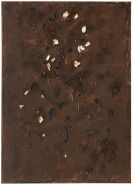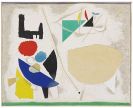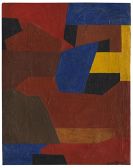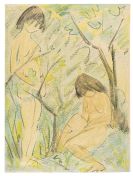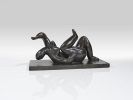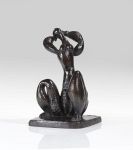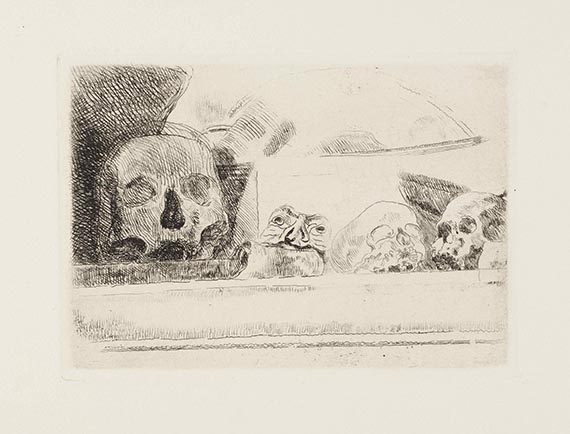
Marianne Brandt
Chemnitz
1893 -
Kirchberg/Sachsen
1983
Marianne Brandt studied painting and sculpture at the Weimar Hochschule für Bildende Kunst from 1911 until 1918 with Fritz Mackensen, Richard Engelmann, and Robert Weise. In 1919 Marianne Brandt (née Liebe)travelled to Norway, where she married the Norwegian painter Erkik Brandt in Christiana. The Brandts lived in Norway and the South of France until 1922 before moving the following year to Weimar. In 1923 Erik Brandt returned alone to Norway; the couple eventually divorced in 1935.
At the age of thirty-one, Marianne Brandt enrolled at the "Bauhaus" in Weimar in 1924. Marianne Brandt was in the metalworking workshop run by László Moholy-Nagy, who recognized and fostered her talent. The years 1924-29 saw Marianne Brandt produce numerous designs in quick succession, which are numbered among the icons of "Bauhaus" design, such as her 1924 teapot and sieve. From 1926 Marianne Brandt was deputy head of the metalworking workshop. In this capacity, Marianne Brandt was respnsible for collaborative projects with industry. For the lighting firm of Körting & Mathiesen ("Kandem"), she designed nuermous lamps which were successfully produced, including, notably, the 1924 hanging ceiling lamp and the 1928 "Kandem" table lamp she designed in collaboration with Hin Bredendieck.
At the "Bauhaus" metalworking workshop, Marianne Brandt worked with Christian Dell, Hans Przyrembel, and Wilhelm Wagenfeld. In 1929 Marianne Brandt had a brief stint working in Walter Gropius' Berlin architecture practice. There she mainly designed furniture for mass production and modular furniture while also working on the interior design of housing in Karlsruhe-Dammerstock.
Although she was extremely talented and successful at the "Bauhaus", Marianne Brandt never managed to establish herself as a self-employed industrial designer. Until 1932 Marianne Brandt was head of the design division for the applied arts at the Ruppelwerke Metalware Factory in Gotha. After that Marianne Brandt again turned to painting and lived a very retired life.
In 1949 Marianne Brandt was invited to teach at the Hochschule der Bildenden Künste in Dresden and from 1951 to 1954 she taught in East Berlin at the Institut für angewandte Kunst.
Would you like to sell a work by Marianne Brandt?
Infos for seller
